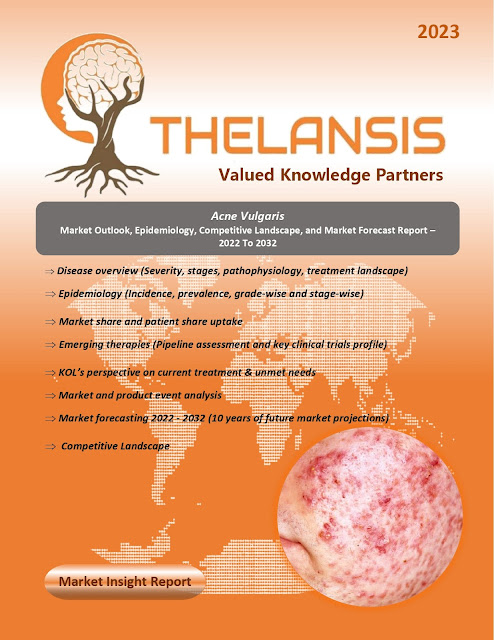Junctional Epidermolysis Bullosa (JEB) – Market Outlook, Epidemiology, Competitive Landscape, and Market Forecast Report – 2023 To 2033
Junctional epidermolysis bullosa (JEB) is characterized by skin and mucous membrane fragility, resulting in blistering with minimal or no trauma. The blistering can be severe, and granulation tissue may develop around the oral and nasal cavities, fingers and toes, and internally around the upper airway. In contrast to many other conditions, blisters in JEB typically heal without significant scarring. JEB is broadly classified into two categories: generalized severe and generalized intermediate. In JEB, generalized severe blisters are present at birth or appear in the neonatal period, often accompanied by congenital malformations of the urinary tract and bladder. JEB generalized intermediate may present with milder blistering localized to specific areas, such as hands, feet, knees, and elbows, with or without renal or ureteral involvement. Some individuals may not experience blistering after the newborn period. Common features shared with other forms of Epidermolysis bullosa (EB) include congenital localized absence of skin, milia, nail dystrophy, scarring alopecia, hypotrichosis, pseudo syndactyly, and other contractures. Diagnosis of JEB is typically confirmed through molecular genetic testing, identifying biallelic pathogenic variants in genes associated with JEB, such as COL17A1, ITGB4, LAMA3, LAMB3, or LAMC2. Although skin biopsy using transmission electron microscopy (TEM) and immunofluorescent antibody/antigen mapping can be performed, it is no longer the preferred diagnostic method. Patients with JEB often require neonatal intensive care due to severe skin lesions and extracutaneous manifestations. Hospitalization is necessary for monitoring and treating issues such as water-electrolyte balance, failure to thrive, anemia, and infectious and respiratory complications. Pain management, often involving opioids, is crucial. Coordinated care from a multidisciplinary team is essential, including meticulous skin management to prevent blistering through protective padding, avoidance of trauma, lancing and draining new blisters, and prevention of secondary infection through careful wound care.
- The estimated incidence and prevalence of Junctional Epidermolysis Bullosa are 2.68 and 0.49 cases per one million live births, respectively. In the United States, the reported incidence rate is 20 per million births.
Thelansis’s “Junctional Epidermolysis Bullosa (JEB) Market Outlook, Epidemiology, Competitive Landscape, and Market Forecast Report – 2023 To 2033" covers disease overview, epidemiology, drug utilization, prescription share analysis, competitive landscape, clinical practice, regulatory landscape, patient share, market uptake, market forecast, and key market insights under the potential Junctional Epidermolysis Bullosa (JEB) treatment modalities options for eight major markets (USA, Germany, France, Italy, Spain, UK, Japan, and China).
KOLs insights of Junctional Epidermolysis Bullosa (JEB) across 8 MM market from the centre of Excellence/ Public/ Private hospitals participated in the study. Insights around current treatment landscape, epidemiology, clinical characteristics, future treatment paradigm, and Unmet needs.
Junctional Epidermolysis Bullosa (JEB) Market Forecast Patient Based Forecast Model (MS. Excel Based Automated Dashboard), which Data Inputs with sourcing, Market Event, and Product Event, Country specific Forecast Model, Market uptake and patient share uptake, Attribute Analysis, Analog Analysis, Disease burden, and pricing scenario, Summary, and Insights.
Thelansis Competitive Intelligence (CI) practice has been established based on a deep understanding of the pharma/biotech business environment to provide an optimized support system to all levels of the decision-making process. It enables business leaders in forward-thinking and proactive decision-making. Thelansis supports scientific and commercial teams in seamless CI support by creating an AI/ ML-based technology-driven platform that manages the data flow from primary and secondary sources.
_page-0001.jpg)


%20Market%20Outlook%20and%20Forecast.webp)
Comments
Post a Comment